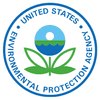What are the root causes of municipal Wastewater Treatment Plant and Drinking Water System Clean Water Act/Safe Drinking Water Act noncompliance that can render U.S. Environmental Protection Agency and State enforcement and technical/financial assistance efforts unsuccessful?
Share this project
Topics
Project Overview
Summary
The U.S. Environmental Protection Agency (US EPA) and the North Carolina Office of Strategic Partnerships (OSP) hosted a research partnership meeting on January 23, 2023 to discuss this project (scroll down for project summary). Click here for the meeting recording.
The Office of Enforcement and Compliance Assurance (OECA) addresses pollution problems that impact American communities through provision of compliance assistance and through enforcement. OECA’s compliance and enforcement activities target the most serious water, air, and chemical hazards. To enhance these efforts, OECA is undertaking an initiative to build a national, evidence-based program designed to achieve higher levels of compliance and resulting environmental improvements through US EPA’s compliance and enforcement activities. This evidence-based building effort expands upon OECA’s Next Generation Compliance (“NextGen”) principles to embrace technology and transparency to promote compliance with environmental laws.
The first steps of this initiative have been to develop a Compliance Learning Agenda (CLA), which identifies some of the most pressing, unanswered environmental compliance questions, and establish an evaluation plan that describes a series of research projects intended to answer those questions. In June 2021, OECA convened a workgroup of volunteers from US EPA, states, tribes, and academia to work together to draft the first CLA. From these efforts, OECA has selected identifying the immediate and underlying causes of noncompliance at small municipal systems as a key unanswered question.
To answer this question, OECA has developed this research opportunity both to gain clarity about the root causes that underlie municipal noncompliance and to render agency interventions (enforcement, technical assistance, etc.) unsuccessful in returning systems to compliance. OECA anticipates that this effort likely will involve multiple research projects examining this question for both the CWA/NPDES and SDWA programs. For example, potential projects might investigate 1) what the most common drivers of municipal noncompliance are and what the US EPA can do improve compliance where these drivers are active; and 2) the relationship between specific causes of noncompliance and the success or failure of an enforcement/compliance intervention to produce compliance or sustained compliance. We currently have research underway in the drinking water area but are looking to expand this effort to build a broader body of evidence on this topic. An example for a process for initiating this investigation might include the following:
- Survey: Obtain information from experts about their understanding of the causes of municipal CWA/SDWA noncompliance.
Data analysis:
- Identify instances in which enforcement or technical/financial assistance or other interventions proved effective and ineffective at achieving municipal compliance – or sustained compliance.
- Identify longstanding instances of municipal significant noncompliance that have gone unaddressed by enforcement and/or technical assistance.
Synthesis: Using the data obtained from the analysis and the potential causes of noncompliance identified through the survey, determine for instances of effective and ineffective municipal enforcement/technical assistance and for unaddressed longstanding municipal significant noncompliance the drivers behind the noncompliance and the associations between these drivers and the effectiveness of the enforcement response.
- Extrapolation: Based on the findings from the synthesis, determine which approaches/tools work best under what circumstances to achieve compliance; identify alternative approaches or mechanisms that could be applied to supplement enforcement/technical assistance or support enforcement/technical assistance to increase the regulators options/capabilities in moving municipal noncompliers into compliance.
Key
US EPA: Environmental Protection Agency OECA: Office of Enforcement and Compliance Assurance OC: Office of Compliance MNc: Municipal Noncompliance NC OSP: North Carolina Office of Strategic Partnerships NPDES: National Pollutant Discharge Elimination System SDWA: Safe Drinking Water Act ICIS: Integrated Compliance Information System SDWIS: Safe Drinking Water Information System DW: Drinking Water
Anticipated deliverables
- Survey results.
- Data analysis summary report.
- Detailed synthesis report.
Planned use of results
Results will be used to improve selection of enforcement and compliance interventions such that the selected intervention is more likely to be effective at returning systems to compliance. We anticipate this effort to involve multiple research projects under both the NPDES and SDWA programs.
Funding
We anticipate some funding to be available. US EPA, agency partners, and research partners will work together to determine a project’s costs. US EPA also has some staff resources available to provide support to research partners.
Data
OSP, agency partners, and research partners work together to assess what data would advance a project, whether the data is already collected and available and/or whether and how to collect share it. Data sources include:
NPDES data from the US EPA Integrated Compliance Information System (ICIS) data system and possibly state NPDES data systems.
- Must ensure completeness and quality of data as this varies between states.
Drinking water data from the federal Safe Drinking Water Information System (SDWIS-Fed).
Survey data from US EPA and state agencies via state associations.
Application details
Expertise needed
Research institution(s) with understanding of the multiple financial, technical, organizational, and other factors (e.g., depopulation, diminishing tax base, etc.) that might impact the ability of a municipality in the U.S. to properly operate and/or maintain a wastewater and drinking water system and comply with the law; familiarity with NPDES and/ or drinking water (DW) enforcement and compliance program.
Key dates
Opportunity open until filled.
Project Team

OECA Compliance Learning Agenda Team